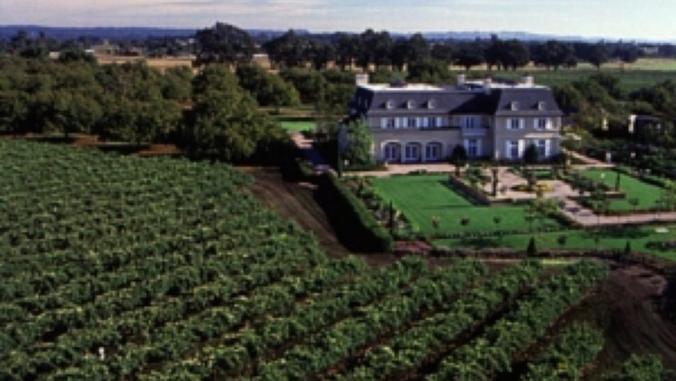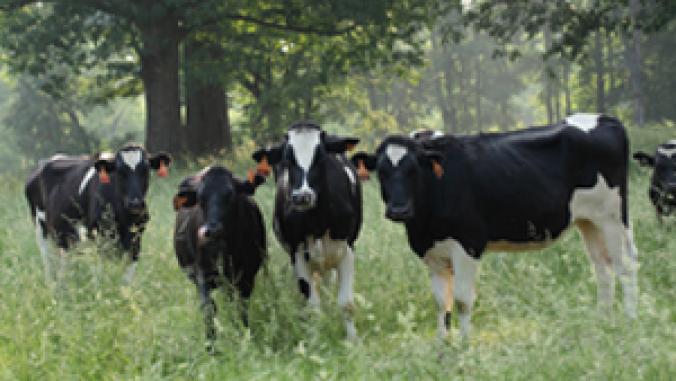Walmart Partnership Saves 600K+ Acres of Wildlife Habitat
<p>Walmart will announce today that its Acres for America program has far exceeded this goal by helping to conserve 625,000 acres of land in five years. So far, the program has donated $18-20 million toward projects that total nearly $20 million in acquisitions.</p>

Image CC licensed by Flickr user alh1
In 2005, the world's largest retailer helped launch a program to conserve one acre of wildlife habitat in the U.S. for every acre it develops for commercial use, with a final goal of preserve 138,000 acres by 2015.
Five years later, Walmart's Acres for America program has far exceeded expectations: The company announced today that more than 625,000 acres have been saved for wildlife habitat to date, with no signs of slowing.
The program launched with an initial $35 million commitment from Walmart, in partnership with the National Fish and Wildlife Foundation (NFWF), and the original goal of 138,000 acres marked the estimated size of Walmart's land footprint in 2015. Walmart has so far donated $18 million to $20 million toward the acquisitions of land worth nearly $200 million.
"The really nice thing about working with Acres for America is that we're able to leverage other contributions and have a larger impact," said Jennifer May-Brust, Walmart's vice president of realty supplier management and compliance
Congress created NFWF in the mid-1980s to promote partnerships between various federal agency partners and the private sector as a way to tap critical resources for fish and wildlife conservation. NFWF, whose partners include Bank of America, Anheuser Busch, Chevron, Shell and FedEx, first approached Walmart to create the program in 2004.
"Walmart is the obviously the nation's largest retailer and they have a large operational footprint," said Tom Kelsch, NFWF director of conservation. "Being a leader in the retail community, we felt they would be an appropriate partner for this."
The program launched in 2005, the same year then-CEO Lee Scott signaled the company's embrace of sustainability, following years of criticism for its business practices. Some also criticized the Acres for America program when it was first announced, branding the program greenwash, claiming the company contributes to urban sprawl, and noting the $35 million commitment is a drop in the bucket compared to annual revenues.
"We welcome feedback from our critics. We think it makes us a better company to think about everything we hear from our critics but I think the program speaks for itself," May-Brust said, noting that Acres of America projects have connected more than 6.7 million acres of wildlife habitat.
Aside from providing the financial resources, a good corporate partner must have an environmental commitment and respect for the organization's procedures for awarding grants and working with federal and NGO partners, Kelsch said. Walmart signs off on the recommendations, but NFWF board members make the final decision on each project, which undergo a peer review with federal or state agencies, NGOs, industry experts and academia.
To maximize the donations, NFWF provides to conservation projects the critical funding needed to take advantage of federal, state or local funding, producing a far greater impact working with partners that working alone. "Many federal conservation grant programs require a certain amount of private matching funds in order to compete for those resources," Kelsch explained.
NFWF also pursues projects that fit into a larger landscape of conservation needs, such as the purchase of a tract that connects plots of conserved lands. The organization's board of directors commissioned a study a few years ago to assess the impact of its investments, finding that over time, many smaller projects lost their conservation value because surrounding lands were developed.
"We relied on that finding to shape the goals and objectives around Acres for America to focus on where properties can help fill in the landscapes of other conserved lands, and help link some of those larger landscapes together," Kelsch said. "When you have larger areas that have been conserved either through public agencies or conservation organizations, there is a much greater likelihood that the fish and wildlife benefits will endure for perpetuity."
For example, Acres for America directed a $785,000 grant toward a 2,400-acre easement in Wyoming to protect the migratory path of the pronghorn antelope.
"These pronghorn were being run over by cars on the highway they were crossing, and they were also being caught on barbed wire as they went under barbed wire fences," May-Brust said. "So the project was to retrofit the barbed wire fences and create a bridge that goes over the freeway because these pronghorns will not go through a tunnel."
Although the program has conserved more than 600,000 acres, Walmart's actual land footprint is far smaller, May-Brust said. The company declined to disclose the number of acres it uses commercially. Walmart operates more than 4,300 supercenters, discount stores and Sam's Club warehouses in the U.S.
Image CC licensed by Flickr user alh1.





